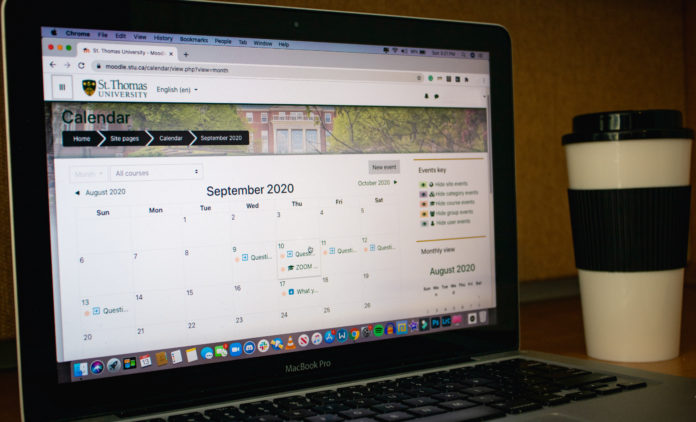
St. Thomas University sociology professor Erin Fredericks said they think STU made the right decision announcing classes will be held online in the fall.
“I expect, as do public health officials, that there will be another lockdown of some sort, maybe not to the extent as last time, and we couldn’t distance in our classrooms, they’re too small.”
On June 10, STU announced to students that their fall semester would be delivered online.
But some students feel concerned about online learning.
Psychology major Carol Alvarez is going into her second year at STU but she’s working from Quito, Ecuador.
Her biggest concern is the accommodation of time zones.
“As an international student, I can say that when you plan to study abroad, you hopefully think that your four years are going to be in Canada,” Alvarez said.
“But during this situation, some of us, even returning students, cannot go to Canada because of economic situations.”
When in-person classes had to be halted in March of the last academic year, associate vice-president communications, Jeffrey Carleton, said STU realized its current technology wasn’t going to be enough if classes had to go online for the fall semester.
The university invested in new remote teaching hirers, software and hardware upgrades equalling about $600,000 over the course of three years.
“We had a larger pot of money that we were able to quickly explain to the provincial government that we wanted to use this for remote teaching technology and supports,” Carleton said.
“We got approval on that, so, we’ve been able to re-profile that money and use it for these remote teaching investments.”
STU upgraded its technology to include software tools like Panopto and Perusall. It also upgraded Moodle, which the university used before.
Perusall will keep students engaged in group readings, Panopto will be used for the recording and sharing of online lectures. Most students are already on the new Moodle because when students signed up for classes, they were automatically enrolled in Moodle.
STU also hired a new remote teaching team to provide assistance to professors and students prior to and during online course delivery.
Kendra Haines, the educational technologist at STU, was hired this summer to provide technical help to faculty and staff during COVID-19. She’s been running workshops and teaching professors the ins and outs of Panopto, Perusall, Zoom, Microsoft Teams and Moodle throughout the summer.
Haines said each professor can decide how they want to run their class, whether it be similar to in-person learning or completely made-over to be online-based.
“I’ll be eventually moving into helping students navigate some of these pieces of technology as needs arise,” said Haines.
She wants to look into finding different ways to provide students with workshops to help them navigate all of the new technology. She’ll also be helping out with STU’s IT crew.
With the addition of new software, Carleton said STU has placed a heavy focus on asynchronous learning, which means classes will not occur at the same place or time.
Despite the emphasis on asynchronous teaching, some professors are choosing to have Zoom and Teams meetings to keep students on track and have a more personal connection with their students.
Between student’s schedules, family commitments, internet and computer access, Carleton said it’s just more accessible if professors stray away from synchronous learning.
Fredericks is teaching introduction to sociology this year, and for her, the most important thing is maximizing the student to professor communication.
“I want to try to seem as accessible as possible,” she said.
She said she’s given her students multiple forms of contact and will encourage them to attend drop-in Teams meetings if they’re getting confused with course material or feeling overwhelmed about university.
“And then each week, I’ll be doing a short video on a university skill that might be useful.”
